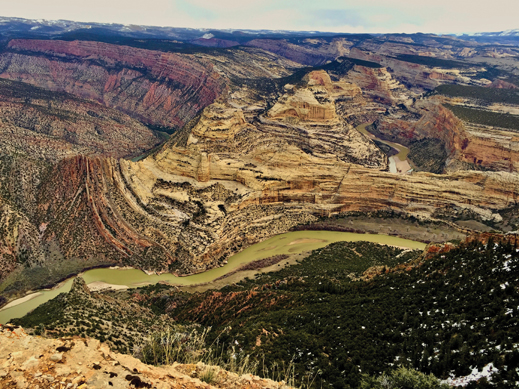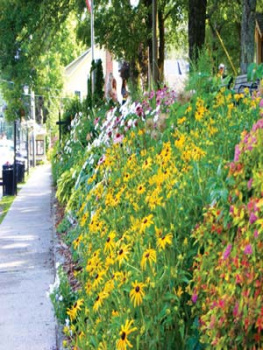Bill Haggerty is a Colorado native, an avid outdoorsman and hiker, and author of Hiking Colorados Western Slope (FalconGuides, 2017); Best Easy Day Hikes Grand Junction and Fruita (FalconGuides, 2015); and Haggertys Hikes in a Bottle (H3J Publications/GJ Daily Sentinel, 2007), a collection of the 52 top hikes on the Colorado Plateau chosen from 13 years of weekly hiking columns that Haggerty penned for the Grand Junction Daily Sentinel.
Haggerty was also a contributing author to the nationally recognized Project WILD, an interdisciplinary environmental education program for K12, and a contributing author to Monumental Majesty: 100 years of Colorado National Monument, published by Grand Junction Media in 2011. He hosted the popular Bills Backyard on Grand Junction television for 18 years, a weekly program that documented wildlife in western Colorado. He also taught journalism and mass media at Mesa State College (now Colorado Mesa University).
Haggerty has roamed the Colorado Plateau for more than four decades as a reporter, photographer, Colorado Division of Wildlife information/education specialist, outdoor columnist, conservationist, naturalist, wildlife enthusiast, and public lands advocate. He sincerely hopes future generations will have as much foresight as our forefathers in preserving and enhancing our natural resources.
I acknowledge communityand I am grateful for my family and friends. How would I ever explore without the purposeful support of all of you?
There are five individuals and a dog I am most thankful for in helping me with this book: the Haggerty Guide Servicei.e., JT (John) Toolen, wife Diane Smith, and their Bad-Ass Adventure Dog Raz. We Guide Haggerty! was their motto. And they did. All across the Plateau. I also acknowledge brother Tim and sister-in-law Bernadette. When life took a twist and I was stunned and overwhelmed, Tim said, Take off, eh?! Ive got your back. Bernie took care of everything elseAND provided moral and spiritual support. Hourly. Daily. Weekly. As needed. I am also indebted to my buddy Ray Pilcher, friend and geologist extraordinaire, who helped make sure I didnt screw up too much on rocks and such.
This book would not have happened without these and all the stouthearted outdoor crusaders who joined me on various jaunts across the magnificent Colorado Plateau, including Finnian Fulks, Nick Massaro, Steven Marshall, Ed Gibbons, Paul Chenault, Bill Elmblad, Joe Rudy, Peggy Pilcher, Ray Pilcher, Jubal Fulks, Dorothy Davis, Glenda Haggerty, Bridgette Haggerty, Austin Haggerty, Kevin Moore (deceased), Bruce Froseth, Guy Kelly, Denice Kelly, Marj McKenna, Larry McKenna, Joe McK-enna, Greg Godbey, Julie Grode, Chris Belle, Dan Dekoven, Nancy Harbert, Robert Traylor, Laurie Rink, Dan Birch, Lori Martin, Ordy Ploehn, Lori Spence, Dr. Kim Spence, Jenn Logan, Scott King, Hanna Finn, Wade Finn, Gail Keeley, Mark Chiono, Dick Maschmeyer, Geoff Tischbein, and Kate Kellogg.
I know I missed someone, but I love you all. And now, I should be able to sell at least forty-five copies of this bookif you all buy your own copy! (Kevin doesnt have to.)
We all came into this world gifted with innocence, but gradually, as we became more intelligent, we lost our innocence. We were born with silence, and as we grew up, we lost the silence and were filled with words. We lived in our hearts, and as time passed, we moved into our heads. Now the reversal of this journey is enlightenment. It is the journey from head back to the heart, from words back to silence; getting back to our innocence in spite of our intelligence. Although very simple, this is a great achievement. Knowledge should lead you to that beautiful point of I dont know. The whole evolution of man [sic] is from being somebody to being nobody and from being nobody to being everybody.
Sri Sri Ravi Shankar
SIZE210,000 acres along the Colorado-Utah border
YEAR ESTABLISHEDOctober 4, 1915, when President Woodrow Wilson dedicated the original 80-acre tract surrounding the dinosaur quarrystill one of the most extraordinary fossil sites in the world.
MANAGING AGENCYNational Park Service (NPS), Dinosaur National Monument
DOG-FRIENDLY?While pets are welcome in the monument, they are not permitted on the trails or in the monuments backcountry. Due to extremely hot summer temperatures, do not leave pets in a vehicle for any amount of time.
FEES AND PERMITS$25 per private vehicle, $20 per motorcycle, $15 per person (bicycle or walk-in) for a 7-day pass; annual pass, senior pass, access pass, and active duty military passes also accepted
NEAREST CITIESDinosaur, CO; Jensen, UT
NEARBY PUBLIC PROPERTYFlaming Gorge National Recreation Area, Browns Park National Wildlife Refuge, Gates of Lodore, Desolation and Gray Canyons on the Green River, Canyon Pintado and thousands of acres of BLM property.
SPECIAL CONSIDERATIONSGo to nps.gov/dino/planyourvisit/hours.htm, or call the park at 4357817700 for complete information on hours of operation for the Dinosaur Quarry.
OVERVIEW
This area was ravaged by drought about 150 million years ago. In fact, the entire western interior of North America was high and dry. Dinosaurs of all shapes and sizes gathered near a dwindling river in what is now eastern Utahand eventually died of thirst or disease.
Over the next few million years, rain finally returned to the area. High waters and flash floods shoved dozens of dinosaur carcasses into a relatively small depositional area. And there they remained.
Dinosaurs went extinct 65 million years ago in the Tertiary period when tremendous uplifts altered this area from sea level to form mountains and valleys with large lakes. Massive erosion and river-cutting began carving the magnificent canyons we continue to marvel at today.
During this period, something really weird happened. The ancestral Upper Green River once flowed east to the North Platte River in what is now southeast Wyoming. However, erosion of the Lower Green River combined with the uplift of the Rocky Mountains and caused the entire river to change course, with its drainage now flowing south as it does today.
Uniquely, three physiographic regionsthe Colorado Plateau, the middle Rocky Mountains, and the Wyoming Basinall meet here. The movement of the river, combined with the influences of the physiographic region known as the Great Basin to the west, greatly enhanced the biological diversity of this ecosystem. From dinosaur bones to major rivers changing course, this is one of the most uniqueand remotespots in North America.

The Yampa and Green Rivers meet behind Steamboat Rock in Echo Park.
Renowned paleontologist Earl Douglass discovered that pile of dinosaur carcasses in 1909. With funding from industrialist and philanthropist Andrew Carnegie and the Carnegie Museum of Natural History in Pittsburgh, Pennsylvania, the quarry was painstakingly excavated for 13 years. By then, President Woodrow Wilson had declared this site a national monument.
Today, you can still view that large pile of bones discovered by Douglass. It looks like the cross section of a gruesome mass grave, with gnarled bones and broken skeletons floating in a sea of gray-blue mud some 50 feet deep. Bone fragments and skeletons of allosaurus, diplodocus, and stegosaurus are dispersed randomly where they expired millions of years ago, throughout a thick layer of dried mud within the Morrison Formation. Some specimens were excavated by Douglass and cohorts a hundred years ago and are still displayed at the Carnegie Museum in Pittsburghincluding



